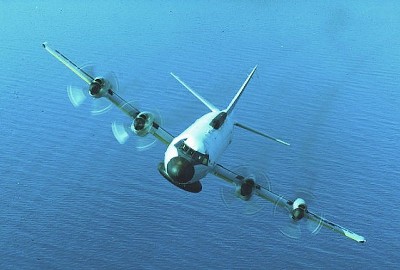In the 1990s, the Navy had 12
Lockheed-Martin P-3Cs converted into EP-3E ARIES II aircraft. These new planes were designed to replace the aging ARIES I aircraft, which were built in the late 1960s and early 1970s. Modifications to the EP-3E began in 1996, and the last aircraft was delivered in 1997. EP-3Es have been used for reconnaissance in support of several military operations, including support of
NATO forces in Bosnia and joint forces in Korea.

Photo courtesy GlobalSecurity.org
|
The EP-3E has four Allison T56-A14 turboprop engines, each generating 4,900 shaft horsepower to propel the plane to an average cruising speed of about 345 mph (555 kph). The four propellers, four-bladed Hamilton-Standard 54H60-77s, convert the engine's shaft horsepower into thrust. The plane is built with five fuel tanks, four wing tanks and one auxiliary tank. The auxiliary tank is a bladder-type tank located in the lower fuselage.
| EP-3E Aries II |
| Wingspan |
99 feet 6 inches
(30.36 meters) |
| Height |
34 feet 3 inches
(10.42 meters) |
| Length |
105 feet 11 inches
(32.28 meters) |
| Engines |
four Allison T56-A14 turboprop engines |
| Crew |
24 |
| Range |
3,000 miles
(4828 km)
or 12 hours |
| Max. Speed |
350 knots
(402 mph / 648 kph) |
The unarmed plane is operated by a 24-person crew, which includes three pilots, one navigator, three tactical evaluators, one flight engineer, equipment operators, technicians and mechanics. The plane has 19 crew stations and a total seating capacity of 24.
For more information on the EP-3E Aries II and related topics, check out the links on the next page.



